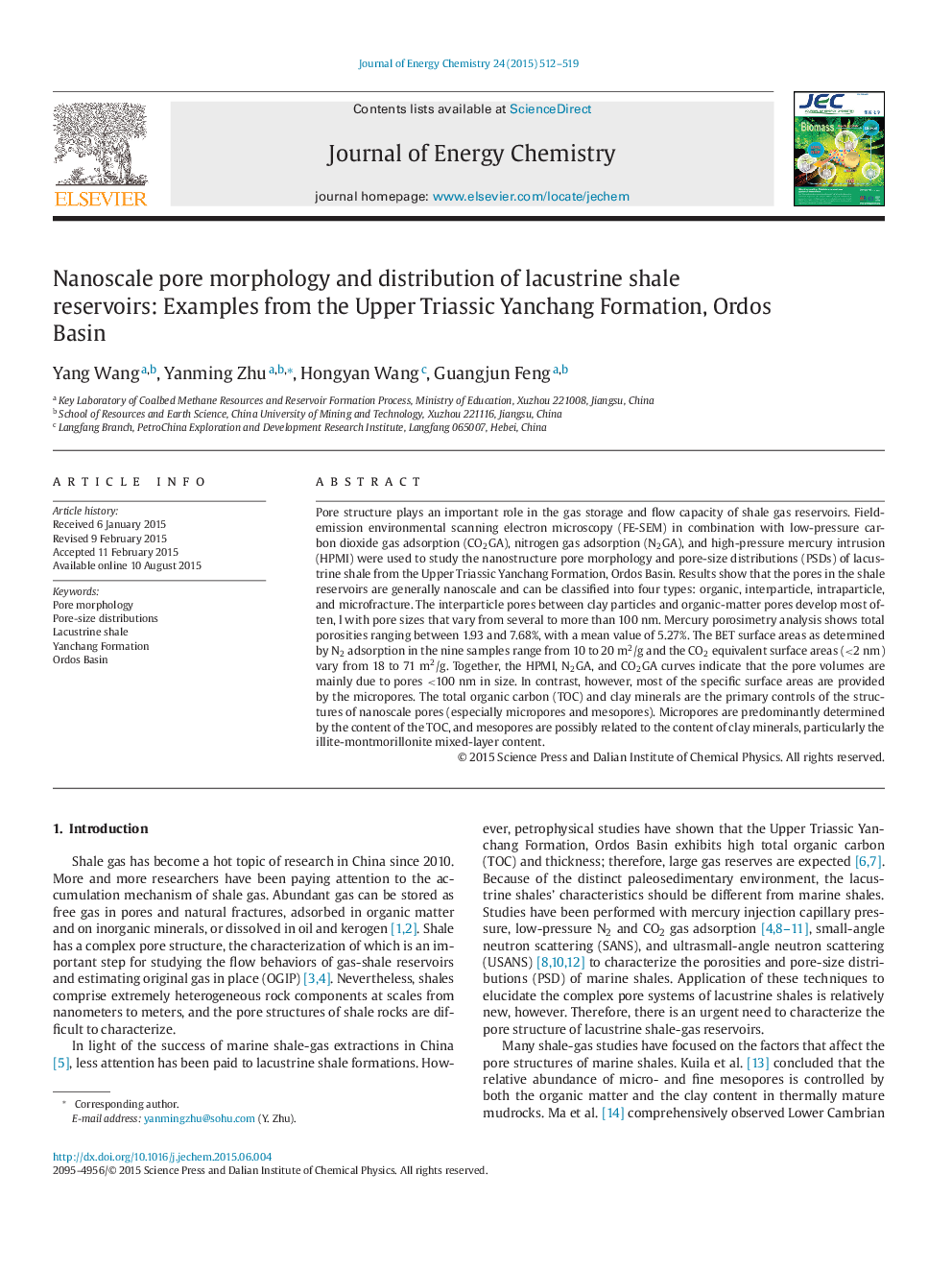| کد مقاله | کد نشریه | سال انتشار | مقاله انگلیسی | نسخه تمام متن |
|---|---|---|---|---|
| 63858 | 48256 | 2015 | 8 صفحه PDF | دانلود رایگان |
Pore structure plays an important role in the gas storage and flow capacity of shale gas reservoirs. Field-emission environmental scanning electron microscopy (FE-SEM) in combination with low-pressure carbon dioxide gas adsorption (CO2GA), nitrogen gas adsorption (N2GA), and high-pressure mercury intrusion (HPMI) were used to study the nanostructure pore morphology and pore-size distributions (PSDs) of lacustrine shale from the Upper Triassic Yanchang Formation, Ordos Basin. Results show that the pores in the shale reservoirs are generally nanoscale and can be classified into four types: organic, interparticle, intraparticle, and microfracture. The interparticle pores between clay particles and organic-matter pores develop most often, l with pore sizes that vary from several to more than 100 nm. Mercury porosimetry analysis shows total porosities ranging between 1.93 and 7.68%, with a mean value of 5.27%. The BET surface areas as determined by N2 adsorption in the nine samples range from 10 to 20 m2/g and the CO2 equivalent surface areas (<2 nm) vary from 18 to 71 m2/g. Together, the HPMI, N2GA, and CO2GA curves indicate that the pore volumes are mainly due to pores <100 nm in size. In contrast, however, most of the specific surface areas are provided by the micropores. The total organic carbon (TOC) and clay minerals are the primary controls of the structures of nanoscale pores (especially micropores and mesopores). Micropores are predominantly determined by the content of the TOC, and mesopores are possibly related to the content of clay minerals, particularly the illite-montmorillonite mixed-layer content.
Pore volumes of lacustrine shale are calculated by using various techniques. The results indicate that pore volumes are mainly contributed by micropores (d<2 nm) and meso-macropores (2 nm
Journal: Journal of Energy Chemistry - Volume 24, Issue 4, July 2015, Pages 512–519
